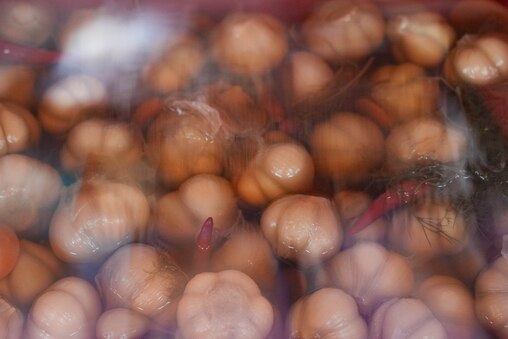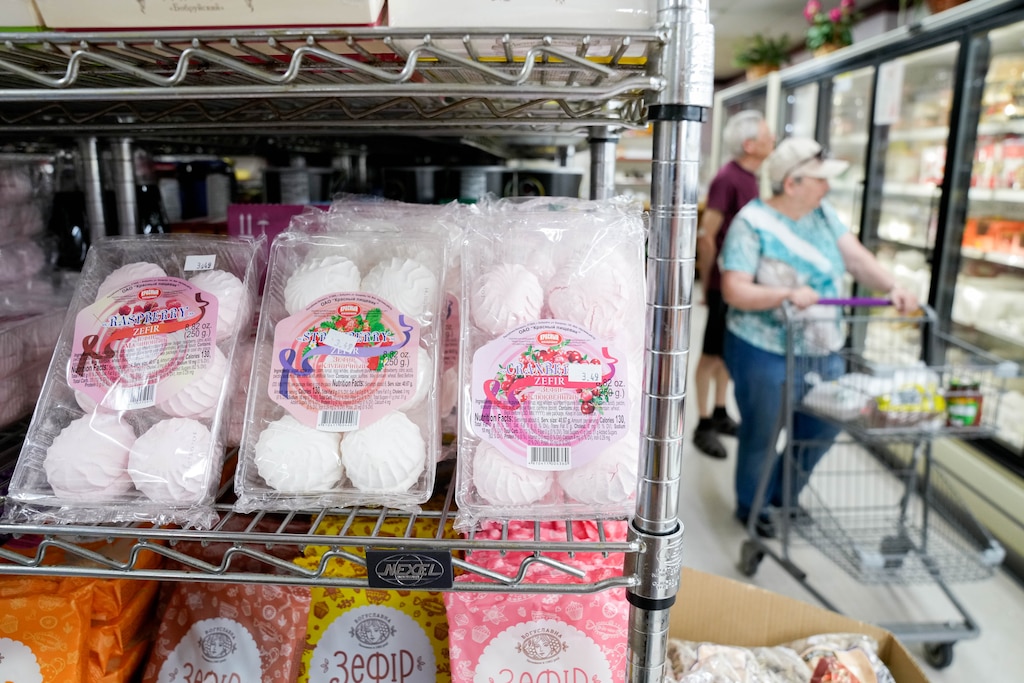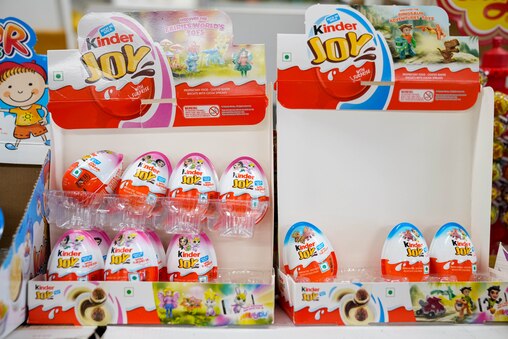Walking into International Food Market, or one of the four Eastern European food markets in Baltimore, is like walking into the kitchen and pantry of any grandmother from the former Soviet Union.
Including my grandmother.
I grew up following my parents into International Food Market, Euro Deli on Reisterstown Road, or any one of the few places where we could find Eastern European food.
My parents, like many Russian-speaking Jews, fled antisemitism in the Soviet Union and came to Baltimore. Like many immigrant communities, they brought their home culture with them.
While it will feel like you need to speak Russian to enter the store, you don’t.
You should know, however, that no one who works there speaks English comfortably. Coming from someone who doesn’t read Russian, it helps to know what to look for when you’re there.
What’s cooking? Prepared food you can find at International
The standouts are in the prepared food section: glass cases filled with carrot, beet, or cucumber salads and an assortment of pickled vegetables, potatoes, sour cream and mayonnaise.
Here you’ll also find vareniki, or fresh sticky dumplings filled with either cooked cherries or beef.
Pirozhki, not to be confused with the Polish pierogi, are yeasty buns filled with apple or cherries.
You should also try the golubtsi — ground chicken or beef wrapped in leaves of braised cabbage and cooked in a tomato sauce.

Also behind glass are a collection of cakes, including the one I always turn to: a layer cake with thin honey-flavored sponge and a sour cream and honey-based whipped filling.
From apples to tomatoes: we really do pickle everything
Imagine the icy cold winters of Siberia. This is the picture my parents painted for me when I wondered why there is so much pickled food in Russian cuisine.
At International, you’ll find pickled tomatoes. The ones to get are the big juicy ones sitting in a big plastic bucket with dill, peppercorns, and garlic swirling around.


In glass jars in the aisles you’ll find pickled mushrooms, soaking with dill and capers. If you’re feeling adventurous, try pickled garlic, unpeeled, or whole pickled green apples.
If you’re feeling even more adventurous, you can try my mothers’ favorite: selyodka, or pickled herring.
Shuba, a Soviet delicacy in plastic containers, is like a casserole with layers of beets, carrots, sour cream, and selyodka — apparently, this strange combination works. I pray for those who discovered it.
I will always get a bucket of kapusta, or pickled cabbage. You’ll want to get a large helping of this stuff. As someone who is dangerously obsessed with salt, the crunch and slurp takes me immediately back to the smell of my grandfather’s kitchen, where he’d slice and season masses of cabbage to last for months.

Must eat salty and sweet in the refrigerators
Tubs of black and orange caviar, called ikra in Russian, are stored in the refrigerated section.
The way to eat any type of caviar is by taking a blinchik (the Russian version of a crepe — a little thicker, less milk-heavy and more savory than the French kind), spreading it with butter, and putting a dollop of ikra on top. The word heavenly does not describe this ingenious combination.
The freezer in the back is piled high with two must-haves: pelmeni and syroki.
A syrok is a cold cheesecake, flavored with chocolate, raspberry or hazelnut, and covered in a thin layer of chocolate.

So much better than Polish perogies, pelmeni use the same thick dumpling dough but are filled with pork, chicken or beef, and are shaped into a small circle. Prepare them by boiling them in salted water with a tablespoon of oil until they float to the top. After draining the dumplings, add salted butter, freshly chopped dill, pepper and sour cream to the dumplings in a serving bowl. This is the meal that anyone of Soviet descent will recognize with tearful nostalgia.
Hearty sandwich ingredients
You can’t go wrong with salami at the Russian food store: They are all overly processed and absolutely delicious as a result. My dad’s favorite is Doctorskaya, which translates roughly to doctor-ly. To eat it right, buy half a loaf of the Ukrainian bread and spread it with sour cream or butter.


My mother said that Russian stores were the one place you could find real bread practically anywhere in America. Her definition of real bread is really dark, with grain so strong it exercises your jaw. She says the grain’s wholeness is the reason she never had any trouble with gluten until she moved to the U.S.
Snacks and candies
The center aisles are where you find the Russian snacks. Everyone I know loves zefir, a hard-shelled fruit-flavored marshmallow-y meringue dessert snack. Bubliki are addictive miniature bagels dried up into a sweet and savory cracker. Pryaniki are chewy gingerbread-like spice cookies, soft inside with a thin shell of frosted sugar on the outside. Oreshki, which is a play on the Russian word for nuts, are shortbread cookies shaped like walnuts and filled with caramelized condensed milk (or dulce de leche).
When checking out, you’ll find an assortment of random candies, Prince Polos, and Kinder chocolate.
Of the random candies, look for those with a cartoon drawing of a squirrel, baby, bear or cow on the packaging. Any of these will be a sugary combination of chocolate, nuts, and condensed milk or caramel.



As a kid, I discovered Kinder chocolate before anyone else I knew. Back then, you could still find the Kinder eggs with toys inside them at International, long after they were banned in the U.S.
I always knew that going inside International meant that Russian was the only accepted language, and that part of my ability to feel like I belonged depended on how well I could speak it. Growing up a decade after my parents moved to Baltimore from Ukraine, my Russian often escaped me.
But growing older, I realized that it didn’t matter. Just like my grandmother, the Soviet immigrants who ran the International market were proud to have me here in Baltimore. They were proud that I was one of many children born of our parents’ communal pursuit of the American Dream.
The International food market itself is one product of that dream, and serves the community that dreamt it.
You don’t need to speak Russian to shop there. That is part of the dream come true, too.
Eastern European Markets in Baltimore
International Food Market
7004 Reisterstown Road, Baltimore, 21215
Euro Deli
10520 Reisterstown Road, Owings Mills, 21117
Global Gourmet
128 Chartley Drive, Reisterstown, 21136
Sun Fresh Produce
806 Reisterstown Road, Pikesville, 21208



Comments
Welcome to The Banner's subscriber-only commenting community. Please review our community guidelines.